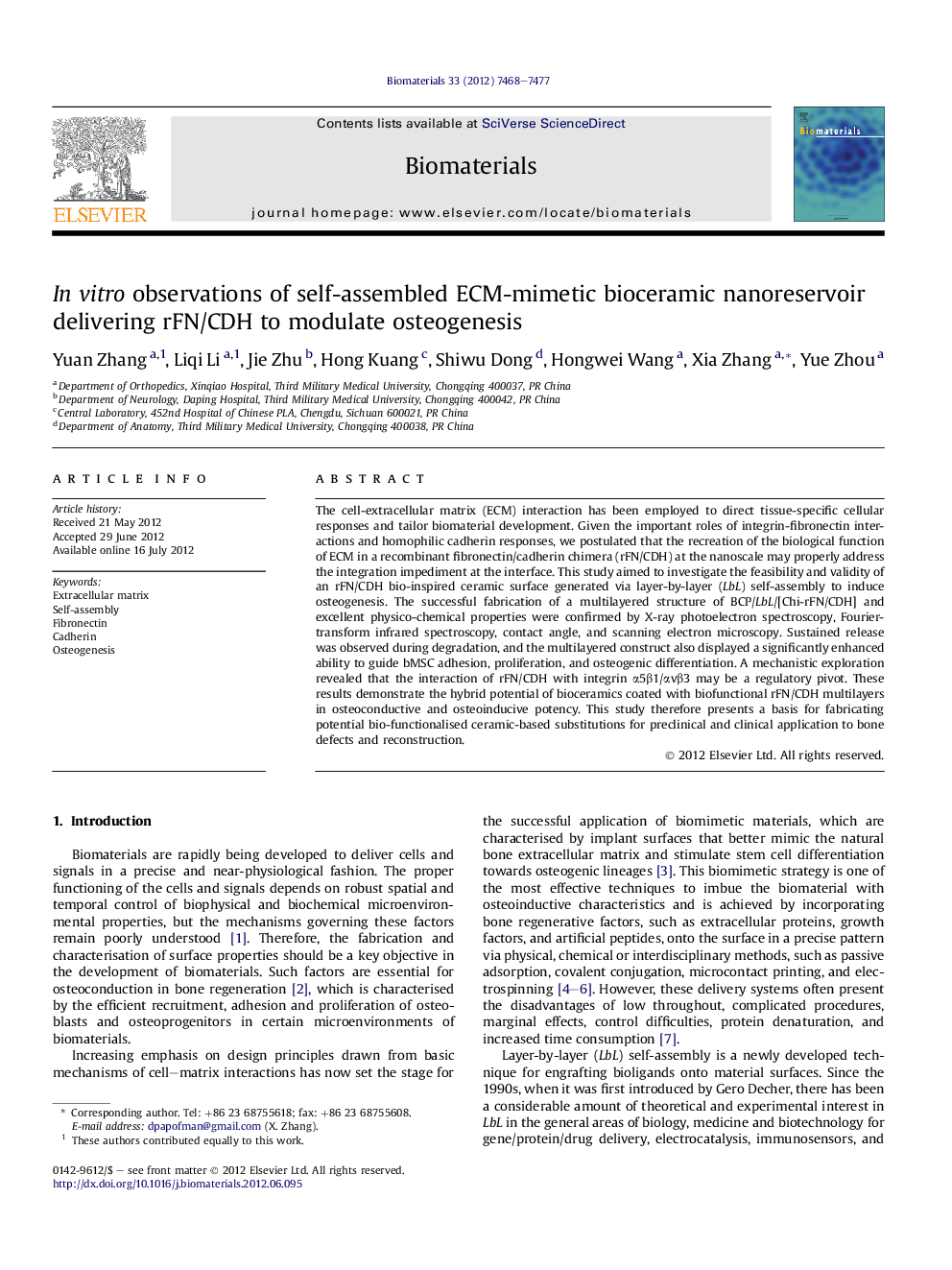| Article ID | Journal | Published Year | Pages | File Type |
|---|---|---|---|---|
| 6653 | Biomaterials | 2012 | 10 Pages |
The cell-extracellular matrix (ECM) interaction has been employed to direct tissue-specific cellular responses and tailor biomaterial development. Given the important roles of integrin-fibronectin interactions and homophilic cadherin responses, we postulated that the recreation of the biological function of ECM in a recombinant fibronectin/cadherin chimera (rFN/CDH) at the nanoscale may properly address the integration impediment at the interface. This study aimed to investigate the feasibility and validity of an rFN/CDH bio-inspired ceramic surface generated via layer-by-layer (LbL) self-assembly to induce osteogenesis. The successful fabrication of a multilayered structure of BCP/LbL/[Chi-rFN/CDH] and excellent physico-chemical properties were confirmed by X-ray photoelectron spectroscopy, Fourier-transform infrared spectroscopy, contact angle, and scanning electron microscopy. Sustained release was observed during degradation, and the multilayered construct also displayed a significantly enhanced ability to guide bMSC adhesion, proliferation, and osteogenic differentiation. A mechanistic exploration revealed that the interaction of rFN/CDH with integrin α5β1/αvβ3 may be a regulatory pivot. These results demonstrate the hybrid potential of bioceramics coated with biofunctional rFN/CDH multilayers in osteoconductive and osteoinducive potency. This study therefore presents a basis for fabricating potential bio-functionalised ceramic-based substitutions for preclinical and clinical application to bone defects and reconstruction.
